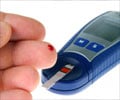Medindia » Multimedia » Slideshows » Sugar Rich Natural Foods

Sugar is a carbohydrate, which is either a monosaccharide containing a single sugar molecule or a disaccharide, composed of two monosaccharides. Monosaccharide and disaccharide compounds found in foods we eat are collectively called 'sugar'.
There are two types of sugars in our diet:
Both milk and fruits contain monosaccharides and disaccharides.
Fruits: Fruits are nutritious foods loaded with vitamins, minerals and anti-oxidants. They contain fructose, a monosaccharide present in fruits, which gets metabolized in the liver. Since fruits contain fiber, water and have a chewing resistance, fructose is metabolized slowly and does not cause fluctuations in sugar levels. However, eating too many fruits at a time or eating fruits with meals can have a negative effect on digestion and sugar levels. Milk: Dairy products are protein-rich foods, which provide satiety along with a bevy of nutrients, particularly Calcium and vitamin A. Lactose is a disaccharide present in dairy products. The small intestine produces an enzyme called lactase, which breaks lactose to glucose and galactose.
Eating foods with added sugar in large quantities leads to weight gain, diabetes, nutrient deficiencies and dental plaque and hence are best avoided. The various types of added sugars are:
Table Sugar: Table sugar refers to granulated white sugar obtained from sugarcane or sugar beet, which is used for sweetening food and drinks we consume on a daily basis. Excessive intake of table sugar can result in:
High-fructose corn syrup is a sweetener found in a variety of processed foods - ketchup, breakfast cereals, soft drinks and salad dressings. It leads to the formation of advanced glycation end products (AGEs), which cause inflammation and oxidative stress and accelerate ageing.
High-fructose corn syrup affects glucose metabolism and creates metabolic disturbances, which result in insulin resistance, the underlying condition in type-2 diabetes. It leads to fat deposits in the liver, which increase the risk of fatty liver disease. It also results in build-up of plaque in the arteries, which can lead to heart disorders.
Honey contains around 69% glucose and fructose and can replace sugar in many foods and beverages.
Since honey possesses anti-bacterial, anti-microbial and anti-fungal properties, it is widely used in traditional medications and therapies. Honey is an excellent ergogenic aid, which is helpful for athletes as it promotes muscle recuperation and glycogen restoration post exercise. It contains nutraceuticals, which boost immunity and combat free radicals thus reducing the risk of cancers and heart diseases. It helps maintain supple and youthful skin and voluminous hair. Although honey is a super food, it must be eaten in moderation since it contains high amounts of glucose and fructose, which can exacerbate pre-existing insulin resistance.
Glucose is the simplest form of sugar, which is the main source of energy for our body. When carbohydrates are broken down to glucose, insulin is secreted from the pancreas, which transports glucose from the bloodstream to the cells for energy.
Dried fruits like dates, figs and apricots and fruits like banana, chikoo, custard apple, pineapple and mango containing large amounts of fructose are examples of glucose-rich foods. Honey, sugarcane, corn syrup, fruit juices, jaggery and molasses are foods containing significant amounts of glucose. Green leafy vegetables, nuts and legumes contain less amounts of glucose.
Carbohydrates are the strongest pillar of nutrition, forming the bulk of our diet by providing 50-60% of our daily calorie intake. Carbohydrates are broken down to glucose, which is the primary fuel for our body, especially brain and muscles and provides energy for everyday activities. They play a role in the optimum functioning of the digestive tract and regulation of sleep.
Depending on their chemical structure, carbohydrates are divided into:
Instead of fearing carbohydrates, diabetics can educate themselves about the best carbohydrate choices for them.
Diabetics must restrict their consumption of simple carbohydrates, often labeled as bad carbs, since they are quickly broken to glucose. Such foods create havoc with blood glucose levels by causing a sudden, sharp increase in sugar levels followed by a crash in a short amount of time. Simple carbohydrates trigger insulin production in large quantities, which if unutilized result in fat storage and increase the risk of Type-2 diabetes. Complex carbohydrates, referred to as good carbs are a wise choice for diabetics since they are slowly broken down to glucose ensuring a steady supply of energy without creating fluctuations in the blood glucose levels.
The glycemic index and glycemic load influences the effect of a particular food on sugar levels. The lower the glycemic index or glycemic load, the lesser would be its influence on blood glucose and insulin levels. Glycemic index measures the impact of a carbohydrate-containing food on blood sugar levels with reference to glucose.
Glycemic load measures both the quality i.e. glycemic index and quantity i.e. quantity of carbohydrates in the serving size of a particular food. Generally, foods containing significant amounts of fiber and protein have a low glycemic index and load since protein and fiber are metabolized slowly by the body.
Fiber refers to indigestible carbohydrates found in plant-based foods which, provides no calories. Fiber provides satiety, which keeps hunger pangs in check. It regulates the digestion of carbohydrates, which stabilizes sugar levels.
A study published in the New England Journal of Medicine demonstrated that when diabetics ate a fiber-rich diet, particularly more soluble fibers, they had stable glucose levels. Soluble fiber binds with water and forms a viscous gel-like solution in the stomach. It delays secretion of digestive enzymes, which slows down the digestion process and subsequent glucose absorption. Dietary sources of soluble fiber include oats, barley, legumes, citrus fruits and apple among others.
